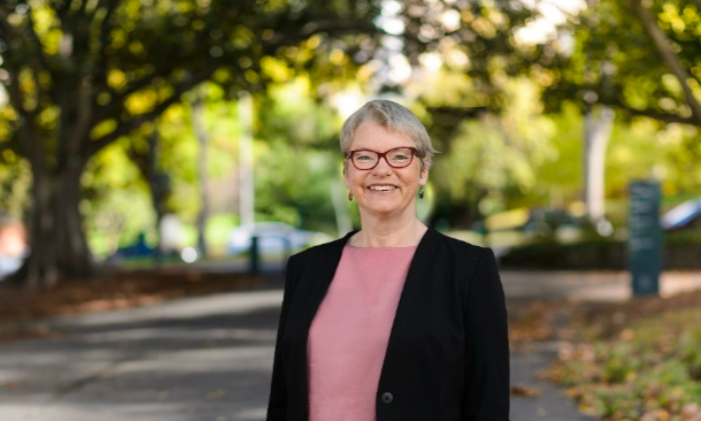After completing her Bachelor of Science at the University of Melbourne it was clear that the environment was going to be at the heart of Janet Rice’s career. Senator Rice’s first role was as an environmental campaigner for the Conservation Council of Victoria and the East Gippsland Coalition, working for the Department of Water Resources and Bicycle Victoria. Senator Rice was also Mayor for the City of Maribyrnong in Melbourne from 2005-2006 before taking the leap into federal parliament.
While Senator Rice may have lived and worked in Melbourne for many years, time spent in regional Victoria and along the coast over many summers have certainly inspired the former scientist and councillor to support Australians living in regional capitals and rural towns through her tireless campaigning and environmentally-conscious policies.
Tell us why you chose to pursue a career in politics.
I’m passionate about saving the world! I’m about making a change with a difference, doing what I can to create a fair and sustainable society. I was one of the founders of the Greens because Australia needed the Greens, and it has been a long journey since then.
What are the top three priorities you would like to achieve in your
current role?
In my current position there are three priorities that are eminently achievable if
the parliament sees some sense. We need to get transport systems running across the country so that everyone has the choice of being able to access fast, frequent, reliable, affordable and safe public transport. We also want safe roads for pedestrians and bike riders.
We are in a situation now where 87% of the wood that comes out of Australia is coming from plantations. I think plantations are great, we need to support our plantations and transition all of our wood production over to plantations, so we can have a really thriving plantation industry without harming protected forests.
The third priority is seeing the government act on climate change. We will be working to get action on climate change that’s equal to the level, scale and urgency needed to get Australia to become a zero carbon economy as quickly as possible.
Could you outline the Greens’ policy priorities in relation to regional cities?
We need to invest in public transport to connect the regional centres to each other and to capital cities. It also means investing in regional health and education, with top-quality, world-class services available so that people don’t feel they are missing out by living in regional centres. It means investing in our telecommunications infrastructure, the NBN, so you could have people living in regional centres who might travel to a capital for a day a week to attend meetings and do the rest of their work back home in their regional centres, but if we haven’t got good telecommunications infrastructure,
then we’re not realising that opportunity.
We’ve got a lot of people on low incomes living in regional centres because that’s where more affordable housing is compared to the capitals. We want to increase newstart by $75 a week so people who are unemployed or working in low-earning service jobs are not living in poverty.
We know that there are a lot of regional centres that would welcome a much stronger, more vibrant refugee policy then what we’ve got. We want to close Manus Island and Nauru and allow those refugees to come to Australia and settle in regional Australia, where they would be welcomed.
Do you think regional cities have different challenges and opportunities compared to rural towns and remote areas?
Regional cities and centres certainly do have different challenges and opportunities. The cities and centres need to have the health, education, transport services and systems that people will travel to access but unfortunately not every regional city has enough services and resources to support the wider population.
If yes, should separate policies be put in place to allow regional cities
to grow?
I think that for regional cities, we should really have a stronger emphasis on recognising their role in Australia, particularly with our population growth. We know that it makes sense for a lot of that population growth to be accommodated in regional centres. It makes much more sense than having the huge, overpopulated, sprawling Melbournes and Sydneys, so it’s really about recognising what needs to happen.
Our current government talks about supporting decentralisation and they might shift a few agencies, but until you actually provide those essential services and high-quality services then people will be unable to take up the opportunities that regional centres have to offer.
Tell us what you love most about regional Victoria.
I’m passionate both about nature and people. The diversity of regional Victoria in terms of its natural areas from deserts to forests, mountains, coasts, from the Wimmera through to the wonderful forests of far-east Gippsland, the coastlines of western Victoria, we have some beautiful areas there.
I grew up having summer holidays every year at Wilson’s Prom, and the mountains! My favourite mountain in the whole wide world is Mount Feathertop in the north-east. Unfortunately I don’t get nearly as much time to go bushwalking as I used to 20 years ago, but I get out there as often as I can. Then there’s the cultural aspects, both of the Indigenous culture and the culture of our towns and cities. We have amazing Indigenous cultures in western Victoria along with all of our wonderful heritage towns, including Daylesford, Castlemaine, Ballarat, Bendigo – they’re all really special places.
